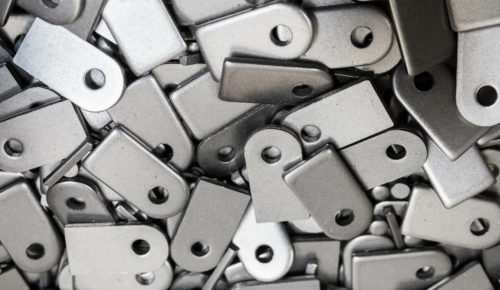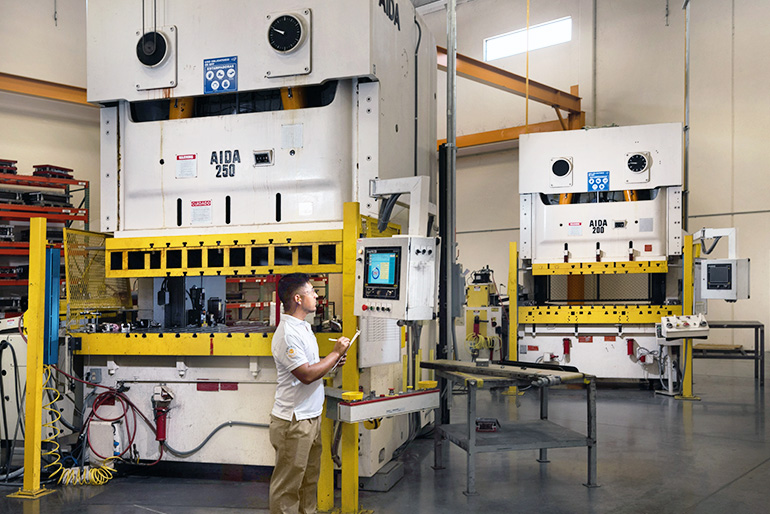Metal Stamping: Technologies Driving Industry Growth
Metal Stamping: Technologies Driving Industry Growth
Blog Article
Metal Stamping Innovations: Elevating Manufacturing Processes for Superior Results
In the realm of producing processes, metal stamping has long been a cornerstone strategy for creating a selection of precision components. With the relentless march of technological advancement, the landscape of steel marking is going through a significant improvement.
Evolution of Steel Marking Strategies

Additionally, developments in product science have caused the development of high-strength alloys that can currently be perfectly marked into detailed shapes, satisfying a wider series of commercial applications. The assimilation of robotics and synthetic knowledge has additionally enhanced the marking procedure by enhancing rate and accuracy while decreasing the danger of human error.

Impact of Advanced Materials
Have innovative materials changed metal stamping procedures significantly in the manufacturing market? The solution is a resounding yes (Metal Stamping). The combination of advanced products has revolutionized metal stamping, making it possible for suppliers to achieve higher accuracy, raised efficiency, and boosted product quality. By making use of products such as high-strength alloys, progressed composites, and ingenious finishes, metal stamping procedures can now create elements that are lighter, more powerful, and more durable than in the past.
These sophisticated products provide exceptional mechanical homes, deterioration resistance, and thermal stability, allowing manufacturers to satisfy the demands of contemporary sectors such as aerospace, automotive, and electronic devices. Additionally, the usage of innovative materials in metal stamping has helped with the manufacturing of intricate geometries and complex layouts that were previously unattainable via conventional techniques.
Additionally, the implementation of sophisticated materials has resulted in decreased material waste, reduced manufacturing prices, and much shorter preparations, making metal stamping procedures a lot more sustainable and cost-effective. As technology remains to development, the influence of sophisticated materials on metal stamping processes is anticipated to drive further development and enhance the competitiveness of makers in the global market.
Automation in Steel Stamping
The development of steel stamping procedures driven by the combination of innovative materials has actually set the stage for substantial advancements in automation within the production market. Automation in metal stamping has actually reinvented production procedures, improving effectiveness, precision, and total result top quality. Via the application of robotics, sensing units, and computer-controlled systems, jobs that were as soon as hands-on and time-consuming can now be implemented with exceptional speed and precision.
Automation in metal marking not just increases manufacturing prices however also ensures consistency in the manufacturing process. By minimizing human treatment, the threat of mistakes is considerably reduced, causing greater levels of item harmony and reliability. In addition, automation allows manufacturers to embark on complex stamping jobs that would certainly be challenging or unwise to attain manually.
Moreover, automation in metal stamping adds to a more secure working atmosphere by lowering the need for staff members to engage in hazardous or repeated tasks - Metal Stamping. This change in the direction of automation not just boosts productivity however also leads the way for the future of production, where modern technology plays a central role go to website in driving functional quality
Quality Assurance and Assessment Solutions
With a concentrate on accuracy and integrity, top quality control and assessment systems play a vital function in making sure product quality in metal stamping procedures. These systems are designed to monitor every stage of manufacturing, from product assessment to the end product, to ensure that all parts meet the called for criteria. By carrying out innovative innovations such as optical inspection systems, coordinate measuring makers (CMM), and automated evaluating equipment, producers can detect even the tiniest discrepancies in measurements, surface quality, and general stability of stamped components.

Sustainability Practices in Metal Stamping
Building upon the structure of accuracy and integrity developed via high quality control and assessment systems, the assimilation of lasting practices in steel marking procedures is significantly becoming a prime focus for makers seeking to lessen environmental effect and enhance source utilization. Sustainability techniques in steel stamping encompass a variety of campaigns aimed go to my blog at reducing waste generation, energy consumption, and greenhouse gas emissions throughout the production process.
One key element of sustainability in steel marking is the fostering of environmentally friendly materials and innovations that advertise recyclability and waste decrease. By using recycled products and carrying out energy-efficient machinery, producers can decrease their carbon footprint and add to an extra sustainable manufacturing cycle. Additionally, optimizing production procedures to lessen material waste and energy use not only profits the atmosphere yet additionally causes cost financial savings for organizations in the future.
Additionally, the implementation of lasting techniques in metal stamping can enhance brand name reputation and interest ecologically aware consumers. As sustainability continues to acquire relevance in the manufacturing sector, integrating eco-friendly efforts right into steel stamping procedures is necessary for long-term success and competition in the marketplace.
Verdict
To conclude, metal marking techniques have actually significantly progressed over time, including innovative products and automation to boost manufacturing procedures. check over here Quality control and examination systems play a crucial role in making sure remarkable outcomes, while sustainability techniques are increasingly being applied to lower environmental impact. These advancements in metal stamping have reinvented the industry, resulting in a lot more lasting and efficient manufacturing approaches for various industries.
Steel marking, once a guidebook and labor-intensive procedure, has changed right into a very automated and advanced technique of forming steel sheets into various forms and designs.Have sophisticated materials changed steel marking processes substantially in the manufacturing market? By using products such as high-strength alloys, advanced compounds, and cutting-edge finishes, metal stamping processes can currently generate parts that are lighter, stronger, and much more sturdy than ever before.
The advancement of steel marking procedures driven by the assimilation of sophisticated materials has set the stage for substantial innovations in automation within the production sector.In conclusion, metal stamping techniques have actually dramatically evolved over time, including innovative materials and automation to improve producing procedures.
Report this page